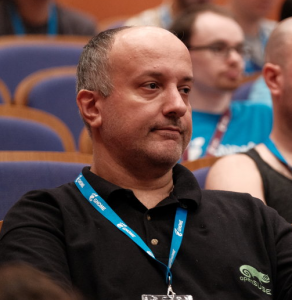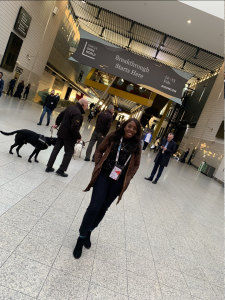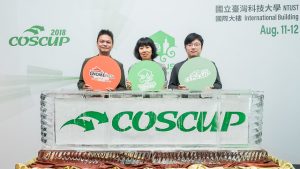With GUADEC two weeks away, this was the perfect time to talk to Program Manager and GUADEC organizer Kristi Progri. To see her amazing work live, register for GUADEC today!

Tell us a little bit more about yourself.
For people who have known me for a long time, I am Kiki. That’s my nickname, which comes from when I was playing basketball and I had four other team mates with the same name.
I was born and grew up in the country with the largest number of bunkers in the world, left over from the communist era. I finished my bachelor studies in International Affairs and Diplomacy and my Master’s Degree is in ‘Information Systems Security’
A few years ago I co-founded the Open Source Diversity initiative and for around five years I was the chairwoman of a local hackerspace in my hometown that promotes all Free & Open Source technologies and data. For many years I was part of the organizing team for many years of the biggest open source conference in Albania.
What is your role within the GNOME community?
I am the Program Coordinator in the GNOME Foundation where I help to organize various events, leading many initiatives within the community including the Engagement Team, and working closely with all the volunteers and contributors. I also coordinate internships and help with general Foundation activities.
Do you have any other affiliations you want to share?
Before joining GNOME, I was very active in Mozilla community. I have been part of the Tech Speakers program and a Mozilla Representative for more than seven years now. I have organized many events and workshops and also have participated as a speaker talking about Free Software communities at many events around the globe.
Why did you get involved in GNOME?
I was introduced to Free Software when I was in high school, my friend had a computer running Debian and he started explaining how it worked. This was the first time I heard about it and I immediately understood that I would never be part of these communities. It looked so complicated and not my cup of tea, but it looks like I was very wrong. Once I went for to a hackerspace meeting I completely changed my mind and from that moment the hackerspace become my second home.
Why are you still involved with GNOME?
Diversity, people, community, sorting out dramas in and outside community, are some very important keywords that drive me to love working in such environment. I am working full time, so GNOME gets a big part of my attention everyday, which I am happy to share.
What are you working on right now?
My working desk is full of post-it notes of to do tasks 😀
My main thing now is organizing GUADEC online edition, working as well Google Season of Docs, University Outreach Initiative, other activities and tasks part of the Engagement team, and many others things which I am sure I have missed.
What are you excited about right now – either in GNOME or free and open source software in general?
We are building a new GNOME Community in Africa and spreading our community more in Asia, I am so excited to know what the future will bring us and how big GNOME will get. I feel like we are gaining momentum and I see very motivated people coming and contributing.
What is a major challenge you see for the future of GNOME?
As in many Free Software communities we have a big challenge with how to get newcomers on board and to keep them motivated to continue contributing. We need to have a very good structured way within the community to guide people for the tasks we need contributors and show them the way. Another major challenge I see is how GNOME will adapt with the new changes that are occurring in the world due to Covid-19 in terms of events, conferences, and hackfest organization .
What do you think GNOME should focus on next?
Financial sustainability and keeping the shiny growth rate we have right now should be one of the most important focuses. As previously mentioned these are difficult times we are currently living in, in the making the world a bit unsafe and therefore this might mean that finding the resources and donors will be challenging.
What else should we have asked about that we didn’t? Please answer 🙂
Whats you favorite physical activity? Weightlifting
Answers edited for length.



